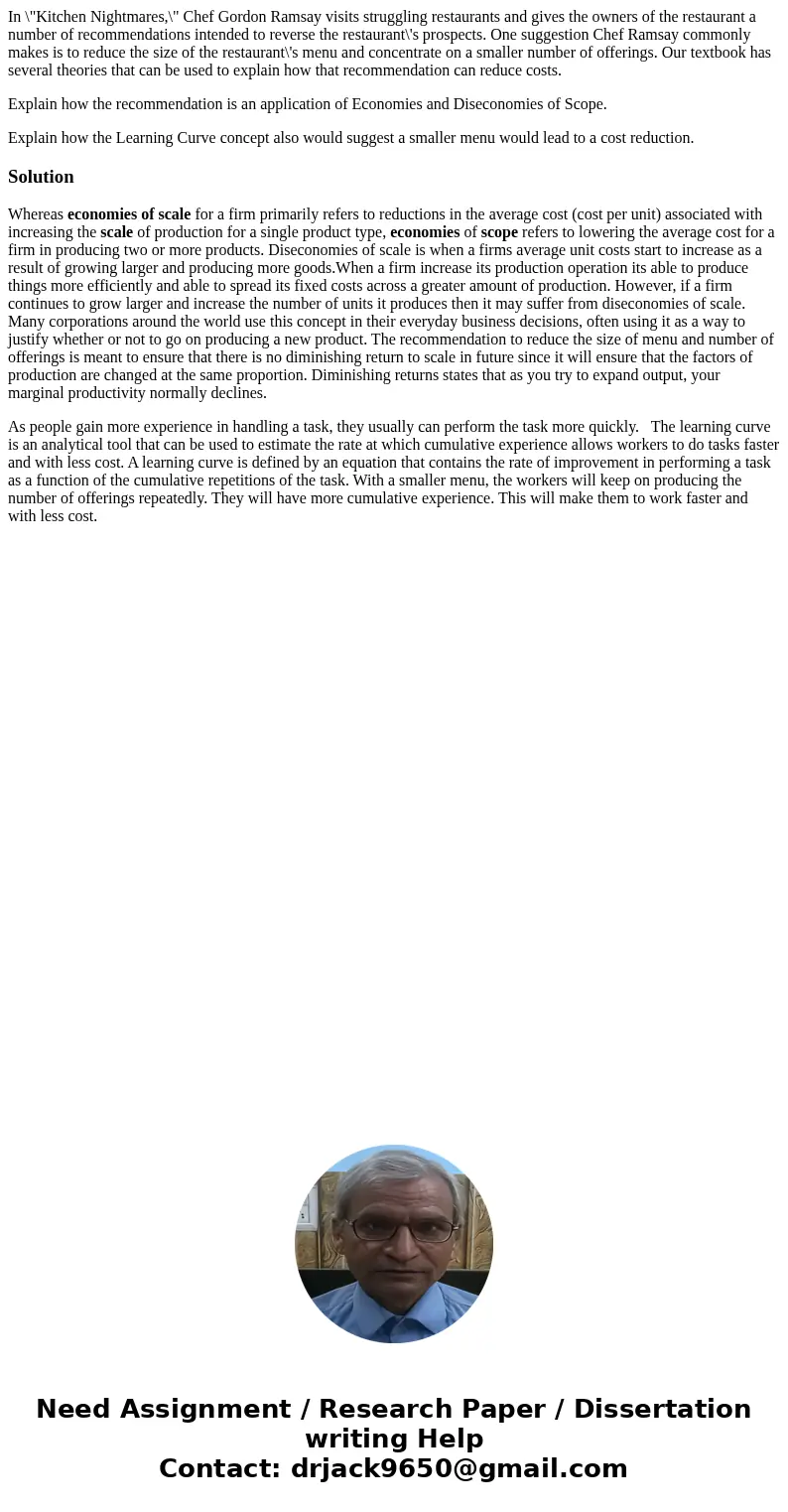In Kitchen Nightmares Chef Gordon Ramsay visits struggling r
In \"Kitchen Nightmares,\" Chef Gordon Ramsay visits struggling restaurants and gives the owners of the restaurant a number of recommendations intended to reverse the restaurant\'s prospects. One suggestion Chef Ramsay commonly makes is to reduce the size of the restaurant\'s menu and concentrate on a smaller number of offerings. Our textbook has several theories that can be used to explain how that recommendation can reduce costs.
Explain how the recommendation is an application of Economies and Diseconomies of Scope.
Explain how the Learning Curve concept also would suggest a smaller menu would lead to a cost reduction.
Solution
Whereas economies of scale for a firm primarily refers to reductions in the average cost (cost per unit) associated with increasing the scale of production for a single product type, economies of scope refers to lowering the average cost for a firm in producing two or more products. Diseconomies of scale is when a firms average unit costs start to increase as a result of growing larger and producing more goods.When a firm increase its production operation its able to produce things more efficiently and able to spread its fixed costs across a greater amount of production. However, if a firm continues to grow larger and increase the number of units it produces then it may suffer from diseconomies of scale. Many corporations around the world use this concept in their everyday business decisions, often using it as a way to justify whether or not to go on producing a new product. The recommendation to reduce the size of menu and number of offerings is meant to ensure that there is no diminishing return to scale in future since it will ensure that the factors of production are changed at the same proportion. Diminishing returns states that as you try to expand output, your marginal productivity normally declines.
As people gain more experience in handling a task, they usually can perform the task more quickly. The learning curve is an analytical tool that can be used to estimate the rate at which cumulative experience allows workers to do tasks faster and with less cost. A learning curve is defined by an equation that contains the rate of improvement in performing a task as a function of the cumulative repetitions of the task. With a smaller menu, the workers will keep on producing the number of offerings repeatedly. They will have more cumulative experience. This will make them to work faster and with less cost.

 Homework Sourse
Homework Sourse